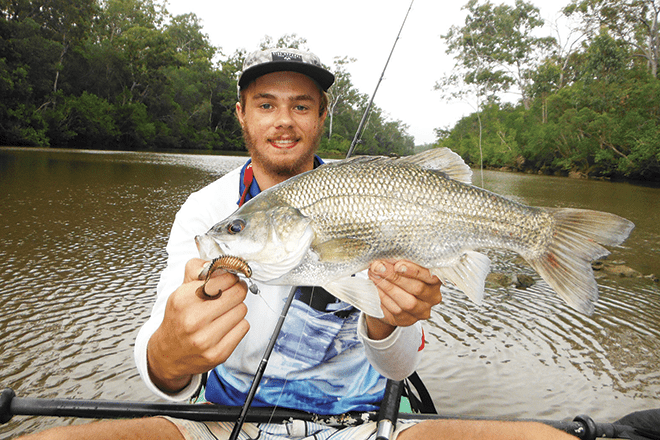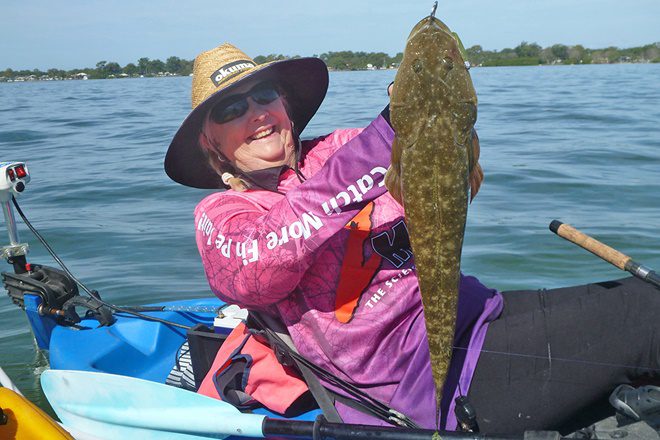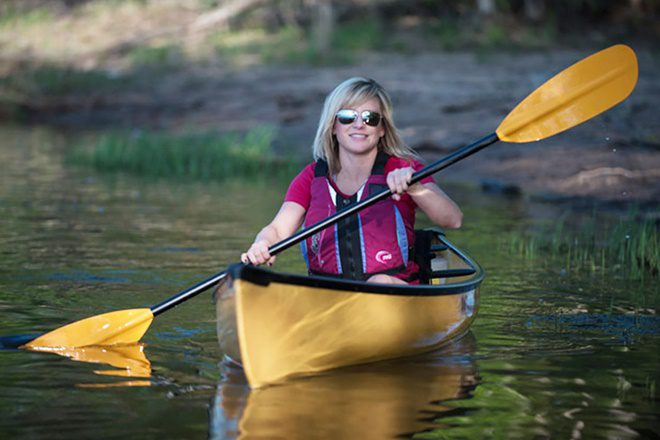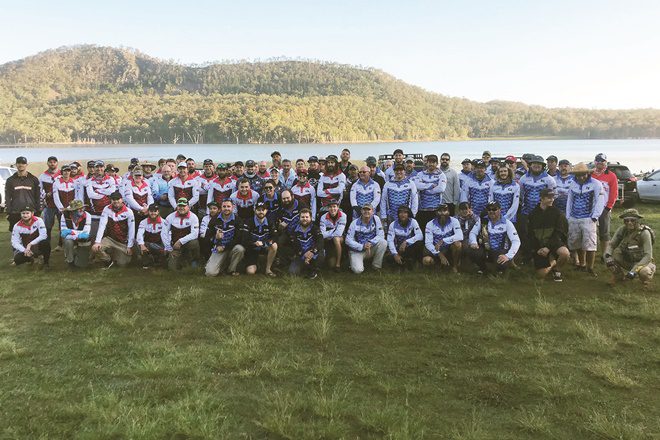FISHING in the beautiful Wide Bay-Burnett area and abroad has taught me many things over the years.
One thing that has become increasingly clear is how accessible the rivers and creek systems are becoming. Once-quiet back road boat ramps out bush are now fully developed, with large concrete ramps and pontoons in almost every river and creek system.
This gives anyone with a suitable watercraft the opportunity to get out and enjoy what our waterways have to offer. Of course, while this is great to encourage recreation, even in my lifetime I have noticed how much more difficult it is to find hidden bush destinations known by only a few people. More and more people are discovering the ‘quiet spots’, and the recent Easter long weekend provides a prime example.
My girlfriend Leeah and I have learnt how a kayak and four-wheel-drive can get you to places truly limited to people who aren’t afraid to get their tyres dirty and maybe do some trekking. Obviously, this type of thing can be risky because you often end up a fair way from help if something does go wrong, so being over-prepared is always best. I always carry a pair of MAXTRAX and sufficient spares with my vehicle because even the simplest situations can and will leave you stranded when you least expect it.
Another consideration is to pay attention to where you’re driving, making sure you’re allowed to be there. Using Google Earth is the primary way I research new destinations, finding a likely section of river, creek or dam and then a possible route. However, what looks like a road from the satellite image might actually be someone’s property, so simply find another way or cross it off your list if that’s the case because there’s no excuse for trespassing.
Having found a number of secluded creek systems that have produced quality fish sometimes and absolutely nothing other times, we were eager to escape the crowds of the Easter holidays and go bush to a destination we were yet to try.
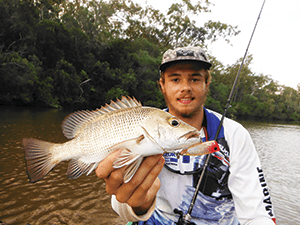
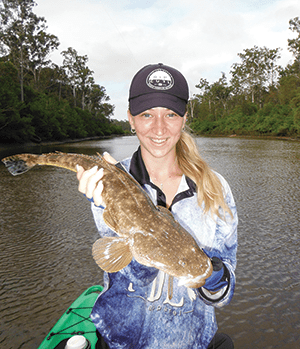
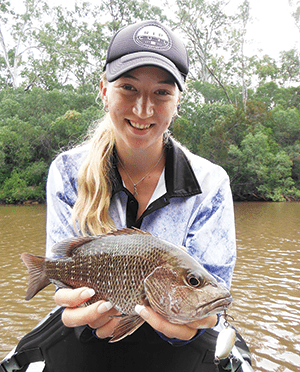
After our first turn-off ended up being a locked private gate, we turned around and searched further to find a likely looking track. Being an unmaintained service road, we were soon pushing through head-high rat’s tail grass and washed out sections of track, but nothing too serious… yet. At last we were within view of the creek, but we were notably higher than where we needed to be, looking down a very steep and old overgrown track towards the creek.
Being on a solo vehicle mission out bush, we decided to walk down the track before committing to it in the ute, and it was lucky we did. Halfway down, there was a 1.5m drop where the track had been washed away in a downpour. A minor setback but we gladly backtracked to find a safer route. We found another way around but were still faced with a fairly steep descent.
This time after a thorough walk-through, I picked my line and steadily crawled down. We had made it, and at last had the kayak in the water and ready to go, so we began paddling through a section of freshwater rapids into a large, deep pool of water. Knowing we were possibly in the very upper limits of salt water but after recent rainfall were paddling through almost completely fresh water, we weren’t sure what to expect in terms of fish species, but there was only one way to find out.
Species such as barramundi and mangrove jack are known to tolerate both salt and fresh water and Australian bass will travel into brackish water at times too.
We based our lure choices on what would best suit the environment and species we might encounter. We hedged our bets on mangrove jack and bass mostly, so I cast a 3” Chasebaits curly tail soft plastic while Leeah threw a Jackall hard vibe. We hadn’t paddled far before Leeah hooked up alongside some likely looking rocks.
A great little mangrove jack popped up, surprising us in basically fresh water. Almost as soon as I’d photographed Leeah’s fish and she’d sent it home, I hooked up.This time the fish fought right on the surface before shooting deep and around the kayak, so I wasn’t sure what I’d hooked up to, but after some persuasion the fish surfaced and a thumping Australian bass slipped into the landing net. What a start!
A jack one cast and a PB bass the next. Measuring in at 46cm, I was stoked and equally excited for the day to come. We paddled down to what appeared to be more rapids, this time leading into what looked like far-saltier water below. We dragged the kayak down the rapids and before I could even think about casting, Leeah had a bend in her rod!
Thrashing on the surface right beside the kayak was a lovely big flathead of about 60cm. Not long after this, Leeah landed another cracking flatty around the same size. Talk about competition… Unfortunately the light was fading and we had to start heading back, but we couldn’t resist having a cast in the low-light period.
Tying on some small poppers opened up a whole new ball game, with surface strikes left, right and centre. While we landed only two juvenile mangrove jack, we would have been struck by well over 10 fish, which was an excellent and fun way to end the day. It’s amazing how fast the sun sets when the fish are biting!
When exploring new destinations, don’t be afraid to get off the beaten track and find what’s beyond the bitumen boat ramp, but know your limits.
I can’t stress enough to ensure you’re properly equipped for the tracks and surroundings you may be faced with. When it comes to fishing secluded areas you’ve never seen before, base your lure choice on the most likely prey for your target fish. Don’t forget, big fish eat small lures too.
This type of thing isn’t everyone’s cup of tea, but I know for sure I’m not the only one who’s addicted to the adventure.
 Bush ‘n Beach Fishing Magazine Location reports & tips for fishing, boating, camping, kayaking, 4WDing in Queensland and Northern NSW
Bush ‘n Beach Fishing Magazine Location reports & tips for fishing, boating, camping, kayaking, 4WDing in Queensland and Northern NSW

